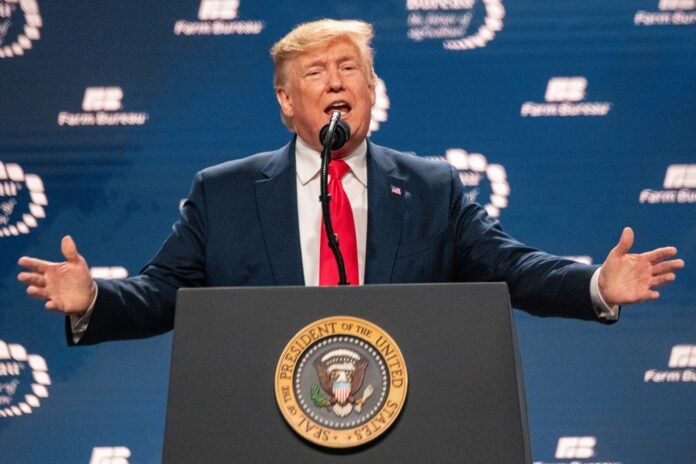Uncertainty Reigns Ahead of Major Trade Policy Shift
Global financial markets are bracing for potential volatility as U.S. President Donald Trump prepares to unveil a new round of tariffs on Wednesday, April 2—an event he has branded as ‘Liberation Day.’ However, with few concrete details on the scope and scale of these trade measures, investors remain in a state of uncertainty.
Why Are Markets Nervous?
For months, speculation has mounted over how Trump’s tariff policies will impact the global economy. The White House has confirmed that the new tariffs will be imposed, but key details—such as which industries will be affected and how trade partners will respond—remain unclear.
According to White House spokesperson Karoline Leavitt, reciprocal tariffs will be placed on nations imposing duties on U.S. goods, while a 25% tariff on auto imports is set to take effect on April 3. This announcement has sparked concerns about a widening trade war, particularly with key U.S. trading partners such as China, the European Union, and the United Kingdom.
Market Reactions: Volatility at Its Peak
Financial markets have already begun reacting to the uncertainty. The Cboe Volatility Index (VIX)—a widely watched indicator of market fear—spiked to 24.80 on Monday before settling at 22.77 on Tuesday. Some analysts predict it could climb toward 30, a level associated with heightened risk aversion.
Meanwhile, the S&P 500 has been caught in a correction phase, down 8% from its February peak. Investors are now split on whether the tariff announcement will trigger a relief rally or further declines.
“We are at a tipping point,” says Steve Sosnick, chief strategist at Interactive Brokers. “Depending on the details of the announcement, we could see either a sharp rebound or a market breakdown.”
Impact on the UK and European Markets
The UK and European economies could be among the hardest hit if Trump’s tariffs include higher duties on automobiles, steel, and technology products. The GBP/USD and EUR/USD currency pairs have already shown signs of instability, with traders positioning themselves for potential swings.
For UK investors, the biggest concern is whether Trump’s tariffs will disrupt trade relationships just as Britain navigates post-Brexit economic shifts. Analysts warn that additional trade barriers with the U.S. could slow down UK export growth and increase import costs.
Key Sectors at Risk
Beyond the stock market, the impact of these tariffs could ripple through multiple sectors, including:
- Automotive Industry: The 25% tariff on imported cars could significantly disrupt European and Asian car manufacturers, affecting brands like BMW, Volkswagen, and Toyota.
- Manufacturing & Supply Chains: Increased import costs could hit UK manufacturers relying on raw materials from the U.S.
- Tech Industry: If semiconductor or software tariffs are introduced, major tech firms—particularly those with global supply chains—could see a dip in earnings.
- Commodities & Forex: Gold prices have surged in response to uncertainty, while the U.S. dollar remains volatile against the British pound and euro.
Will the Federal Reserve Respond?
The Federal Reserve had previously paused its interest rate adjustments in January, citing uncertainty over tariffs as a key concern. However, rising inflation due to higher import costs could force the Fed to reconsider its stance.
“The market has already priced in some of the negative effects of tariffs,” says Anthony Saglimbene, chief market strategist at Ameriprise Financial. “The real risk is if the details remain vague or introduce new uncertainties.”
How Should Investors Prepare?
Given the potential for market swings, analysts recommend a defensive investment strategy.
- Diversification: Avoid putting all capital into one asset class—spread investments across stocks, bonds, and commodities.
- Safe Havens: Consider allocating funds into gold, Swiss franc (CHF), and other traditional safe-haven assets.
- Hedging with Options: Traders expecting volatility in the S&P 500 are preparing with hedging strategies in options markets.
“In times of uncertainty at this scale—similar to the 2008 financial crisis or the COVID-19 pandemic—having a diversified portfolio is crucial,” says Jack Ablin, Chief Investment Officer at Cresset Capital.
Final Thoughts: What to Watch on April 2
As Liberation Day approaches, investors will be closely monitoring:
✅ Trump’s tariff announcement – Will it be a broad policy or sector-specific?
✅ Market reaction – Will the S&P 500 bounce back or drop further?
✅ Currency fluctuations – How will the GBP/USD and EUR/USD pairs react?
✅ Federal Reserve stance – Will inflation concerns push the Fed to change its policy?
With market volatility at its highest in months, Wednesday’s announcement could set the tone for global financial markets in the coming quarter. Until then, the investment world holds its breath.





Leave A Comment